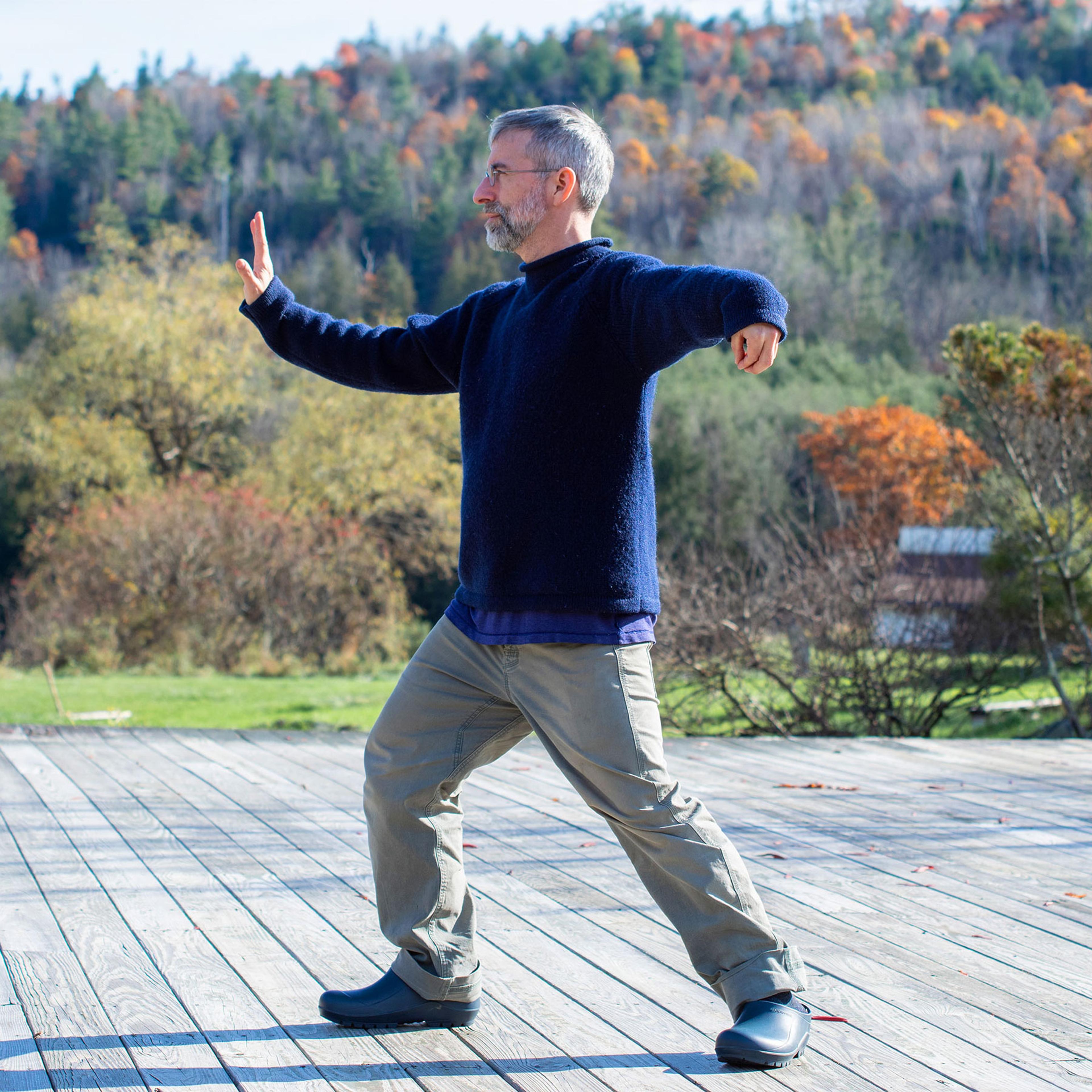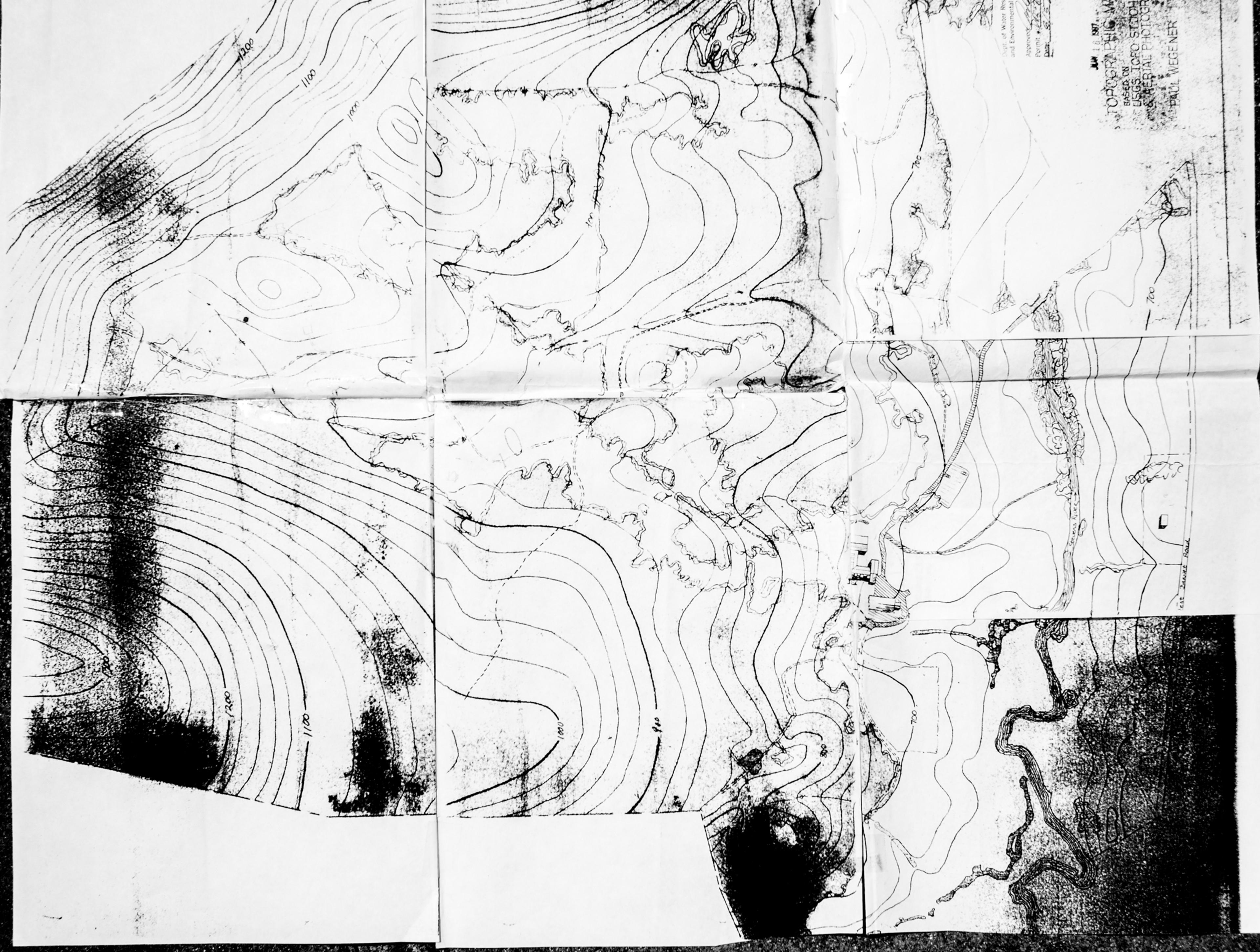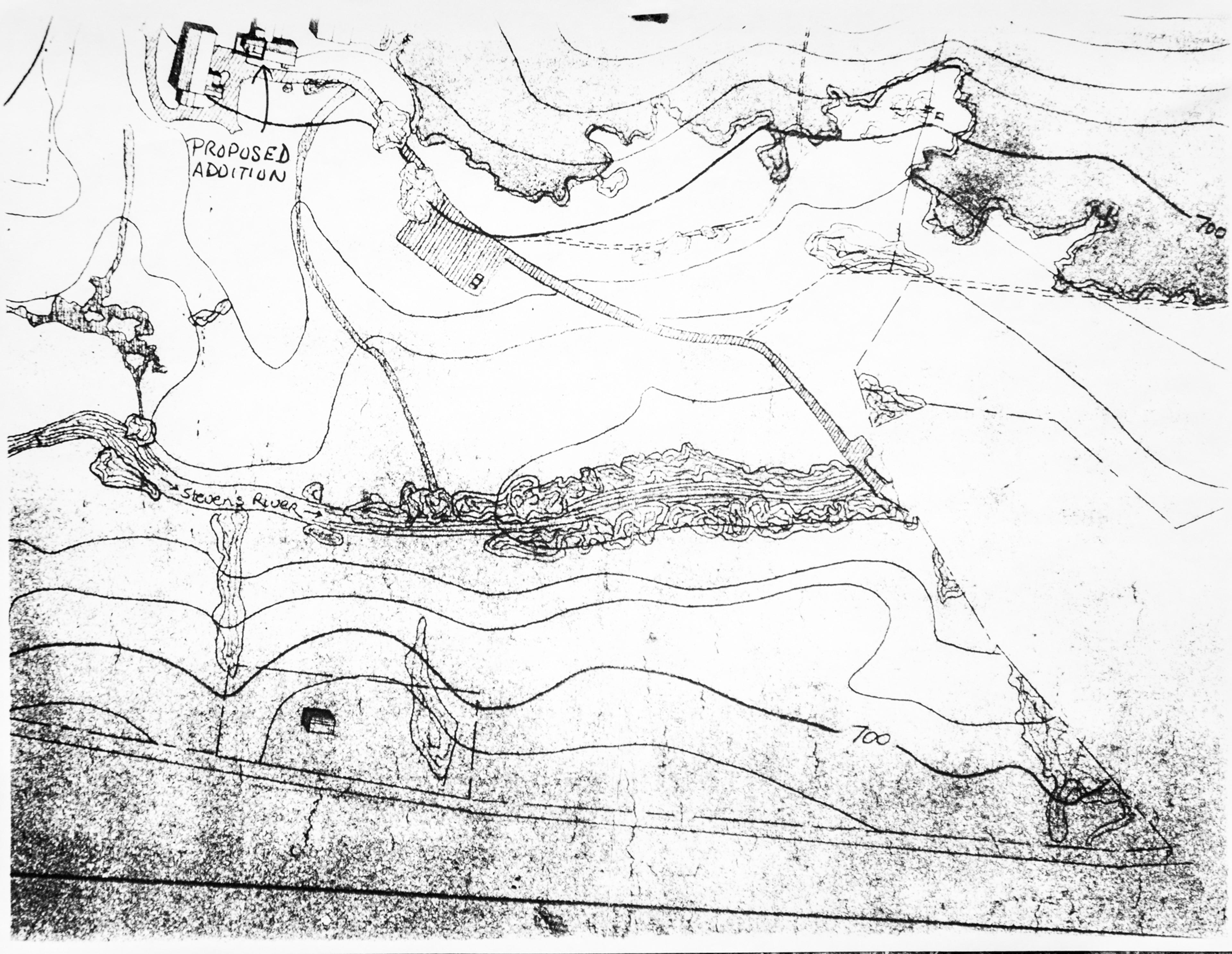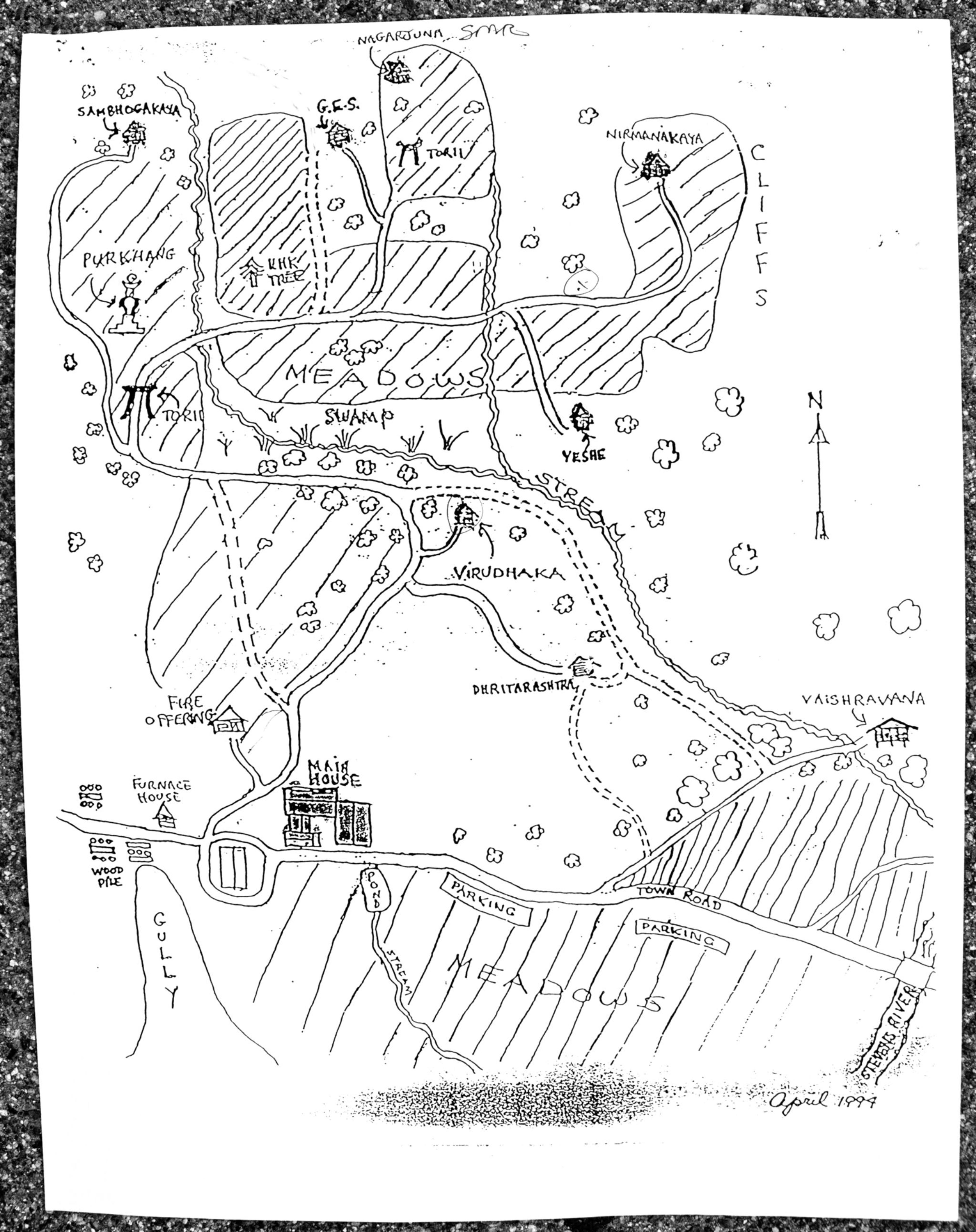Almost a year on the job, and still I’d never seen the inside of the old metal filing cabinet in my office. So the other day I ventured a look. Past the pink, white, and yellow purchase orders I found typed and handwritten letters (remember those?). They were addressed to and from former retreats masters, local officials, senior teachers, merchants, and neighbors. The further I looked, the deeper back in solitary retreats time the cabinet seemed to go. Now-obsolete land-use reports, vintage black bear management guides, blueprints for an unbuilt stupa, urgent inter-office memoranda no longer so very urgent.
An ongoing conversation seemed to echo in that tight, rusty metal box. It asked: How should we run the retreats department? What are the best land stewardship practices? What is a solitary retreat, really? Most interesting to me—in a dusty, yellowed manila folder near the very back—an assortment of maps of the surrounding territory.
If you're like me, you love pouring over old maps, imagining all sorts of possible adventures you might find among their contours. The distance between the complex world we live in and the simplified 2D conceptual schematic that is a map always sets me to dreaming. Here is the dragon’s spine, there are the dragons’ feet, says one map of the land's energetics made by Taoist Master Eva Wong. I enjoy the illusion that this simple symbolic device can orient me in the infinite snowstorm of reality.
“There’s a map of the land in your retreats cabin guidebook,” I told an incoming retreatant, hoping to help ground them. When they asked about aimless wandering, I felt my stomach bottom out. I wasn’t just uneasy that they might invade another retreatant’s container, or emerge from the woods screaming covered in ticks, or get temporarily lost. I was worried I would be responsible if they lost track of conventional reality and disappear without a trace—as if abducted by aliens, or, I guess, in this case, Devas.
So: maps.
Maps reassure us that a navigable world exists. In a way, the world itself is a kind of map made of perceptions and energy. We use its reference points to reassure ourselves that we exist and that we are truly here. Imagine if you were born in outer space. What direction is up? Down? Front? Back? What is true north? If I dare say, Dharma is the best map.
My naturalist friend promised a GPS map that would let me know exactly where I am at all times. I told them I don't want to know exactly where I am at all times. We know a map is just a sheet of paper, a drawing on a lit screen—symbols that stand for a stream, a mountain, a path. We know a map's solid and dotted lines, cross-hatched and shaded curves, aren’t really what’s out there. Maps help us navigate something, but what is it?
You are here, they say.
Joseph Pascutazz
Retreats Master
Karmê Chöling
If you would like to schedule a Cabin Retreat please contact Joseph at:
Was this helpful?
Share This





